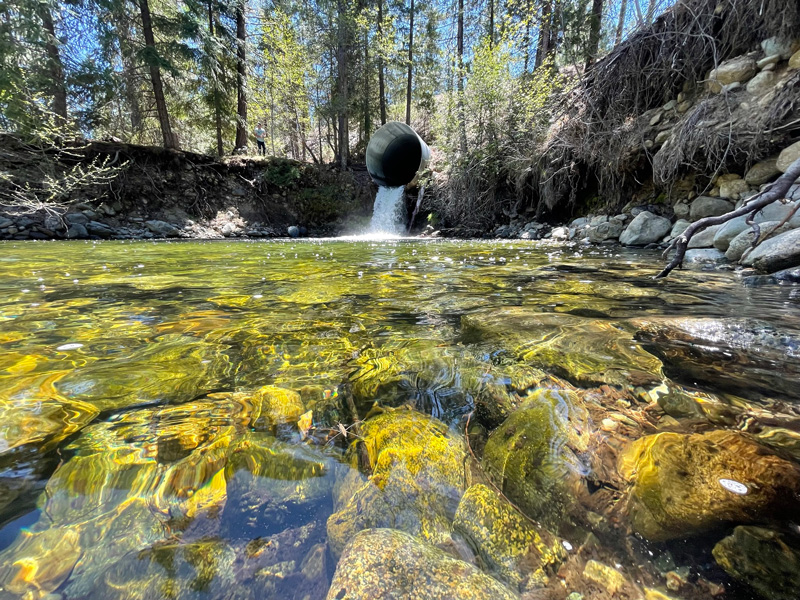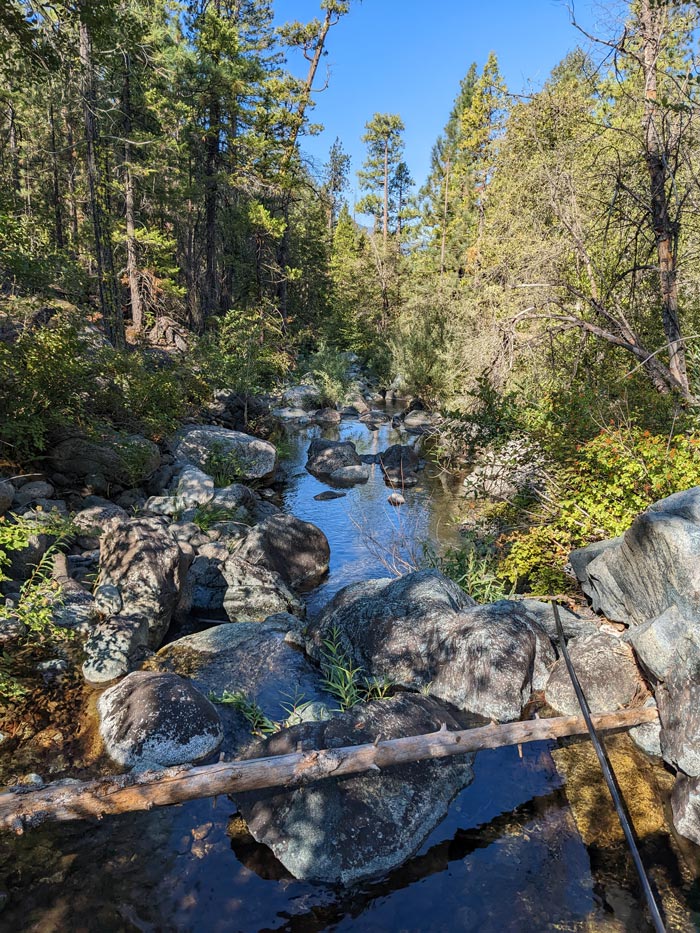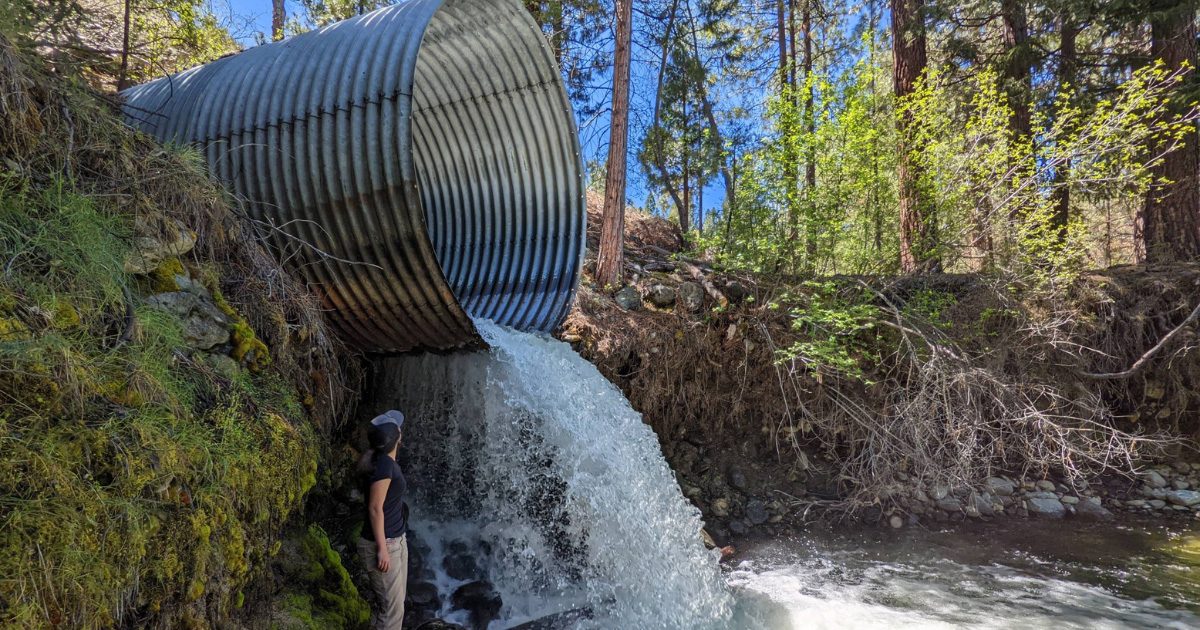New Restoration Project Kicks off on Scott River Tributary
New CalTrout Project on Big Mill Creek, a Tributary to the Scott River
As drought persists and future impacts of climate change threaten, salmonids across the state will increasingly seek out refuge from warming waters. Cold-water streams like Big Mill Creek, a tributary to the East Fork of the Scott River, offer important refuge for these fish including the federal and state threatened coho salmon. In the next few years, CalTrout, with the support of The Wildlands Conservancy and our project partners, will prepare to implement a project to restore fish access to upstream habitat in Big Mill Creek creating impacts that could ripple throughout the whole watershed.
“The East Fork represents an opportunity to increase resilience in the Scott River,” Mt. Shasta/Klamath Region Project Manager Serena Doose explained. Much of the river is warm, but there are cold-water pockets where thousands of coho salmon can be found. “There’s a lot of potential there.”
Coho salmon require a full year of residence in freshwater after emerging from the gravel in the spring. Summer residence is a difficult feat in the Scott River, when the mainstem river often disconnects and large patches of the river and its tributaries go dry. However, Big Mill Creek is a perennial tributary, meaning that it flows year-round, even in the recently dry years. Summer temperatures in the creek hover between 50-60 degrees Fahrenheit, representing a critical refuge for coho when the mainstem can reach 70-80 degrees Fahrenheit. In drought conditions, this thermal refugia is a key link to saving salmon populations and offers important ecological resilience to impacts of climate change.
Located in Siskiyou County, the project site is on a 6,094-acre ranch-turned-nature preserve operated by The Wildlands Conservancy (TWC). Recognizing the opportunities for ecological restoration, streamflow enhancement, and conservation outcomes, TWC acquired the property in collaboration with the Trust for Public Land in 2021, with funds from the California Wildlife Conservation Board, support from the California Department of Fish and Wildlife, and renamed it the Beaver Valley Headwaters Preserve. As a landowner that stewards 23 nature Preserves throughout California and Oregon, TWC serves as an integral partner on this project.
“TWC’s acquisition of the Preserve has created a huge opportunity for restoration on this section of the East Fork. CalTrout and our project partners are already conducting assessments to develop restoration projects with TWC’s full support,” Doose said.
This past July, with the support of TWC, CalTrout received funding from CalTrans (in partnership with the State Water Board) to begin the planning and design phases of the Big Mill Creek Restoration Project. The project will address sediment and temperature impairments to the watershed throughout the larger property. It will also design a solution to remediate a fish passage barrier created by a culvert on Big Mill Creek that channels water beneath Highway 3.


The culvert, installed in 1969, is a complete barrier to any aquatic animal attempting to swim upstream. Above the culvert, on the upstream side of Highway 3, miles of clean, cold water interspersed with deep pools could provide optimal habitat for both juvenile and adult fishes, particularly coho salmon and steelhead. However, this pristine habitat is currently inaccessible and has been for decades. The implemented project would open two miles of anadromous habitat. Fish species affected include coho salmon, steelhead, resident trout, and other resident species including Pacific lamprey, Pacific giant salamanders, and marbled sculpins.
In addition to aiding fish passage, restoration would result in better water quality and quantity for surrounding communities. Public access to the land is currently limited, but TWC hopes to provide increased free public access in the future, including tent camping, educational opportunities, and hiking. Currently, partnerships with the Scott River Watershed Council, Siskiyou Resource Conservation District, local Tribes, and others have led to the early success of the restoration project.
“The Wildlands Conservancy is committed to building lasting partnerships in the region and recognizes the value of community building in the process of both restoring the Beaver Valley Headwaters Preserve’s ecological values and providing free access opportunities,” Landon Peppel, TWC’s Deputy Director for Conservation and Restoration Programs, stated. “There is wide community support in Scott River Watershed to restore its wild salmon runs and we’re here to help make that happen!”
CalTrout is working towards completion of 65% designs by June of 2024 and plans to receive implementation funding for the next phase. This new restoration project at Big Mill Creek complements a host of ongoing restoration and science projects to restore fish populations in the Scott River and the greater Klamath River drainage.
“The East Fork of the Scott contributes some of the warmest water to the Scott during low summer flows. If we can restore access to its coldwater tributaries and increase habitat quality, we can provide more refugia and more habitat for juvenile rearing,” Doose said. “This project will help move the needle on coho salmon restoration efforts in the Scott and in the larger Klamath River watershed.”





